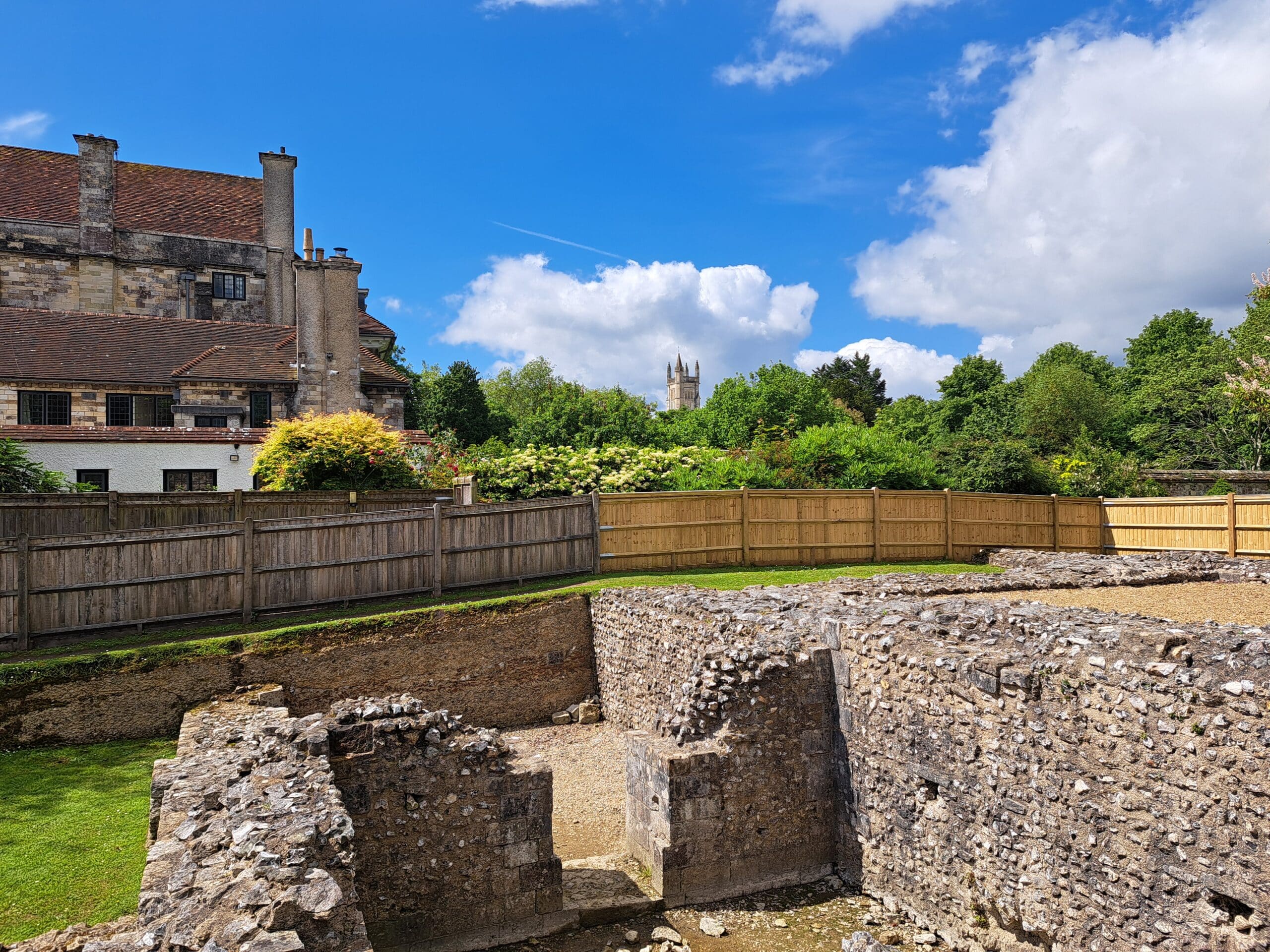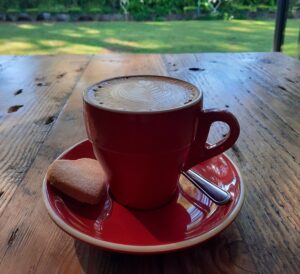Sometimes, not knowing too much about a place before you visit can be a delightful advantage. Winchester had been on our “explore list” for a while, primarily because we often drove past it on other adventures. When we finally visited recently, we were completely captivated by this city with its rich history and beautiful surroundings.
Once an important city during the early medieval period, Winchester served as the capital of Wessex, one of the prominent Anglo-Saxon kingdoms, and later became the capital of England during the reign of Alfred the Great and his successors. The cathedral city remained an important political and cultural centre until the Norman Conquest in 1066, after which the capital eventually shifted to London.
Winchester is a charming city with a tangibly warm, welcoming atmosphere. Its stunning medieval architecture and vibrant cultural scene offer visitors a delightful mix of old and new. From the awe-inspiring Winchester Cathedral to the quaint shops and cafés lining its historic streets, this city is a perfect blend of tradition and modernity.
Where Is Winchester?
Located at the centre of the county of Hampshire, Winchester can be found in the southeast region of England. The historic city borders the South Downs National Park and lies on the River Itchen. It is easy to travel to by car or train.
What To Do And See In Winchester
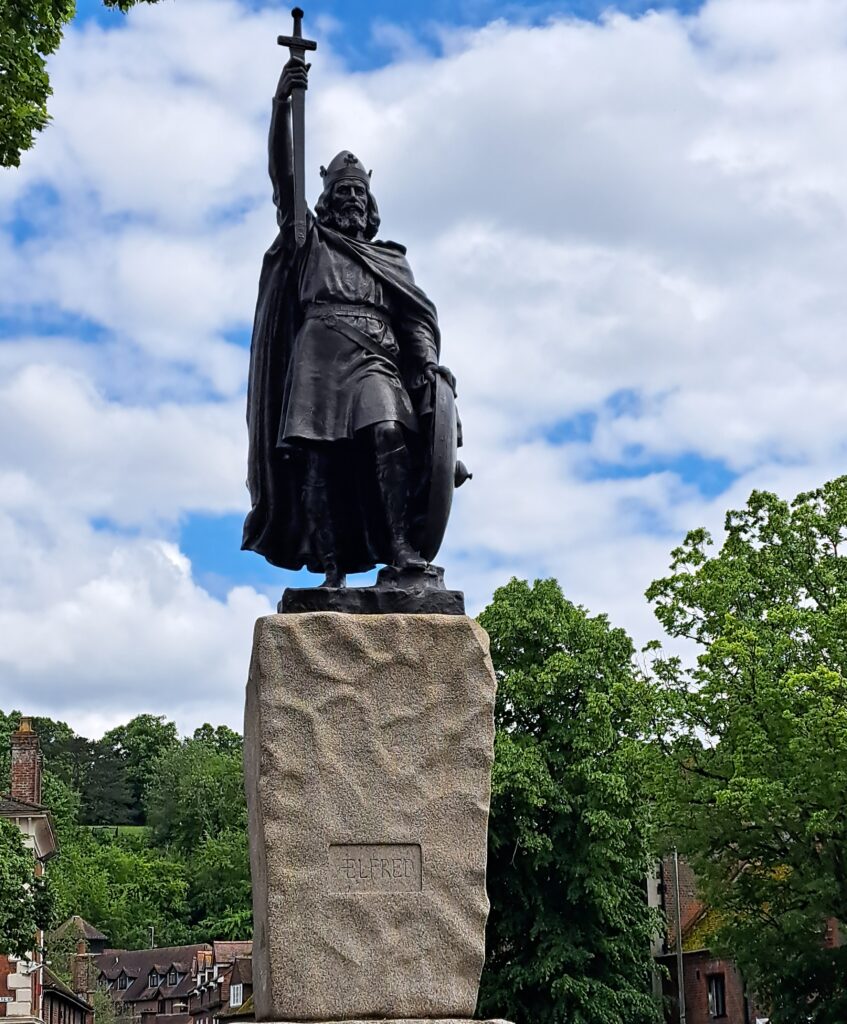
An imposing statue of King Alfred the Great – erected in 1901 – stands proudly at the entrance to the city on Bridge Street.
Alfred, king of the West Saxons from AD 871-899 is credited for driving the Vikings from Wessex. Winchester became his capital and he laid the foundation for a single kingdom of England.
It seemed only fitting to start our walk around this ancient city at this statue.
1) River Itchen and Winchester City Mill
We continued along Bridge Street to the River Itchen. This chalk stream, typical of many in England, meanders around the outer wall of the ancient city adding to tranquil atmosphere. It was a pleasant day and families and elderly locals relaxed on the grassy banks.
One of the notable landmarks along the river is the Winchester City Mill. This historic water mill, which dates back to King Alfred’s times, has been beautifully restored and is now cared for by the National Trust. The water wheel was decommissioned in 2023, but the intention is to create a new wheel and start milling traditional stoneground flour. It also has a fabulous coffee shop!
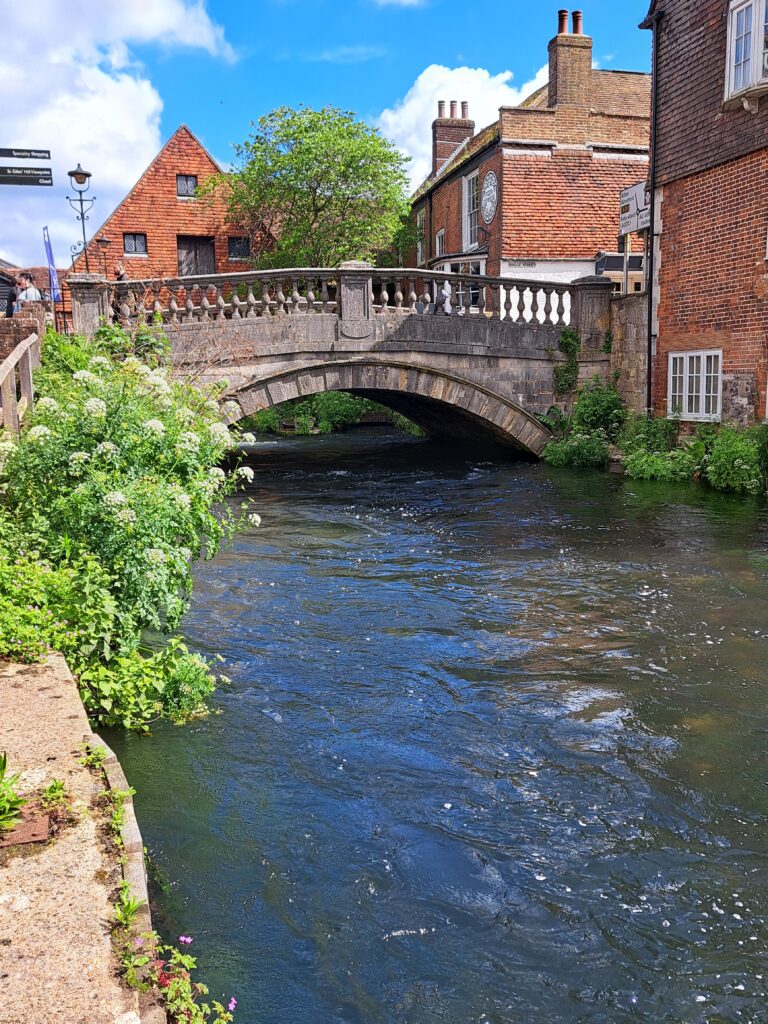
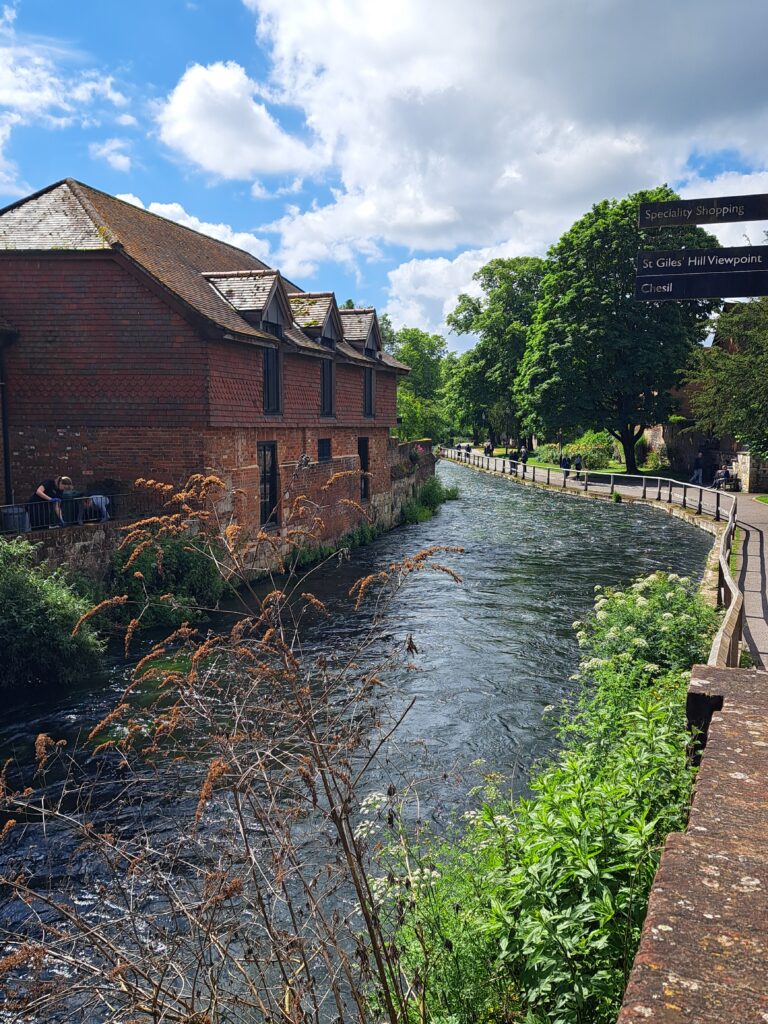
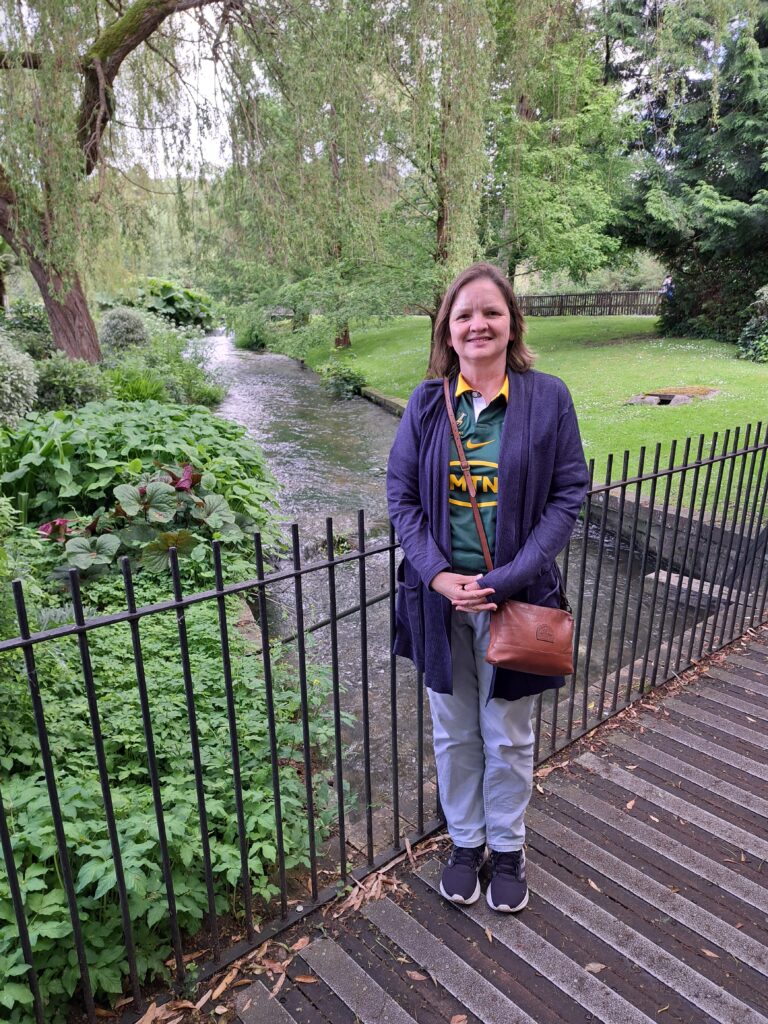
2) Wolvesey Castle Ruins
Our next stop was Wolvesey Castle, also known as the Old Bishop’s Palace. These atmospheric ruins, located near the city centre, date back to the 12th century and once served as the residence of the powerful Bishops of Winchester. The castle played a significant role in English history, witnessing key events such as the wedding banquet of Queen Mary and Philip of Spain in 1554.
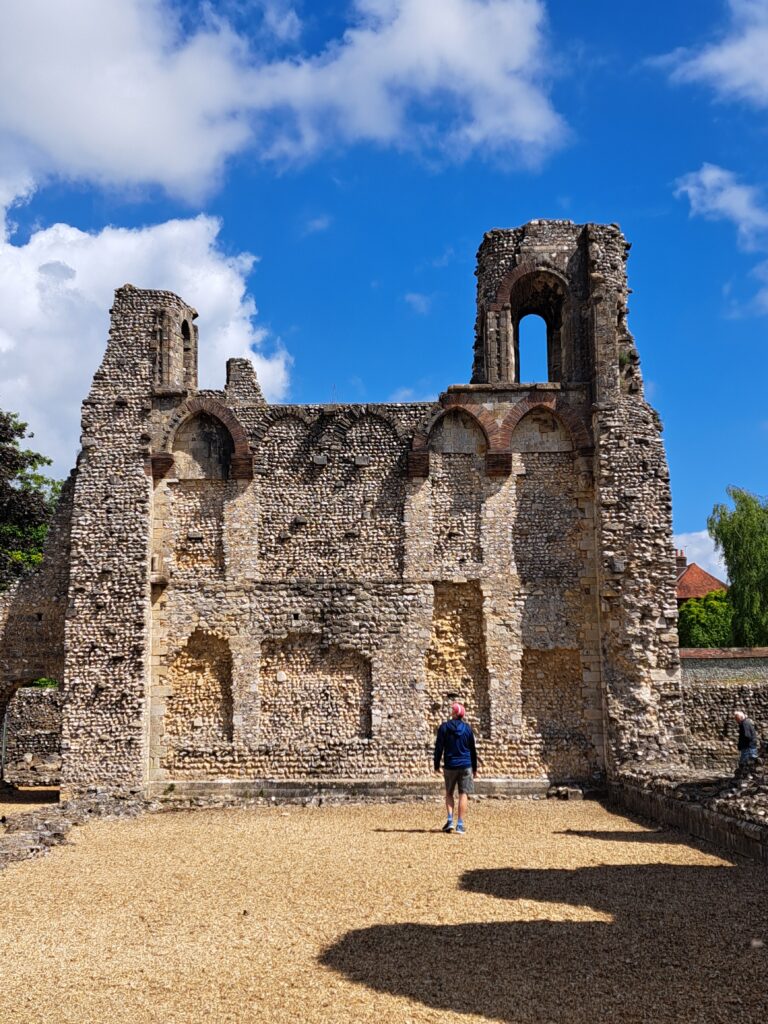
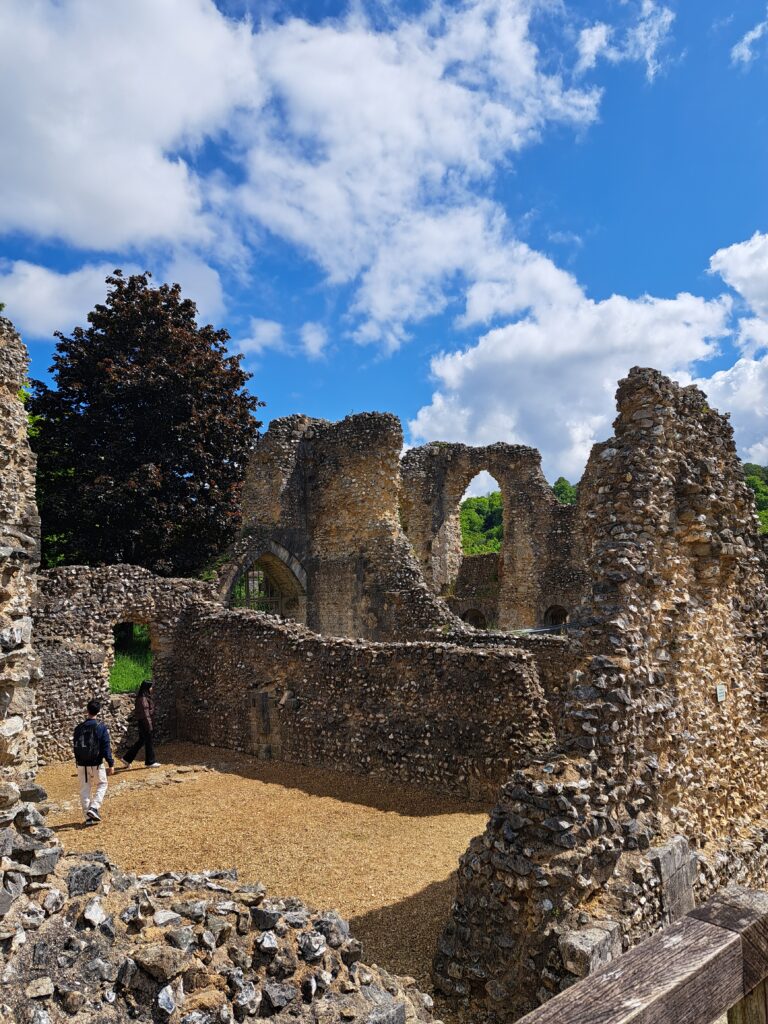
Today, the remains of Wolvesey Castle offer visitors a fascinating glimpse into medieval life. The extensive ruins include the great hall, chapel, and various domestic quarters, providing an evocative setting to explore and imagine the grandeur of its past. Managed by English Heritage, Wolvesey Castle is a peaceful and intriguing site – I am always amazed at how well ancient buildings like these have survived over the centuries.
3) Winchester Cathedral
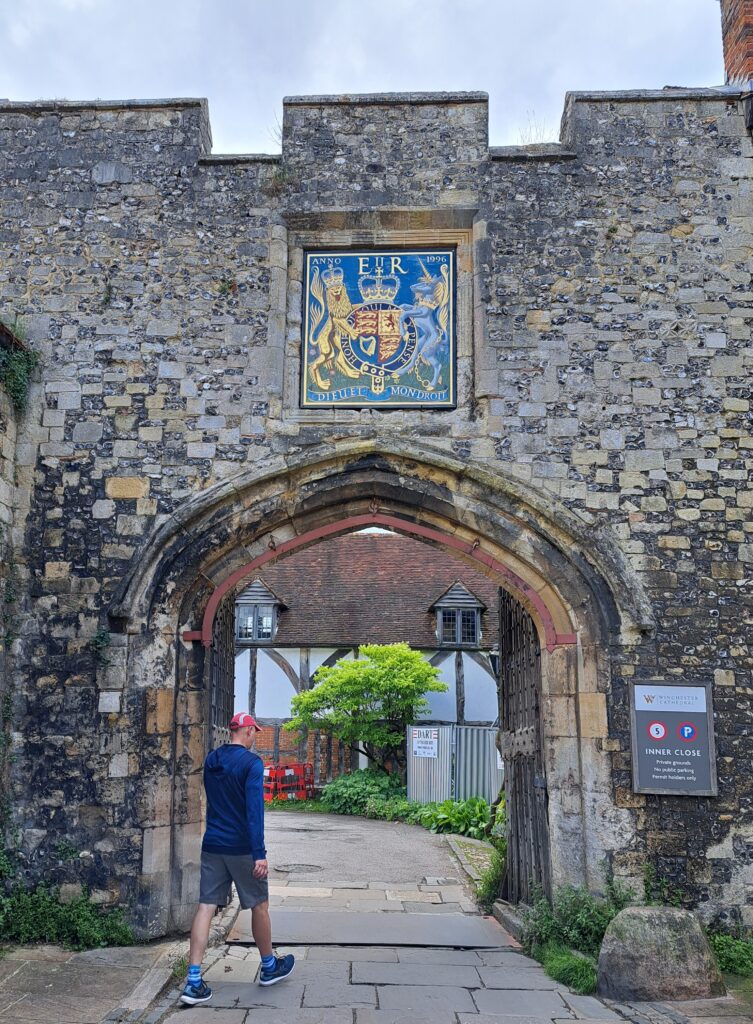
After a short walk around the block, we arrived at Winchester Cathedral, one of the most iconic landmarks in Winchester and a masterpiece of medieval and Norman architecture. We approached the cathedral through Kingsgate passing beautiful historic buildings.
Arriving from this side, you realise how long the cathedral is. I have since read that it is the longest cathedral in Europe! We walked to the front and main door of the cathedral, admiring the stunning architecture, knowing that our photographs could not possibly capture the beauty and enormity of this magnificent building.
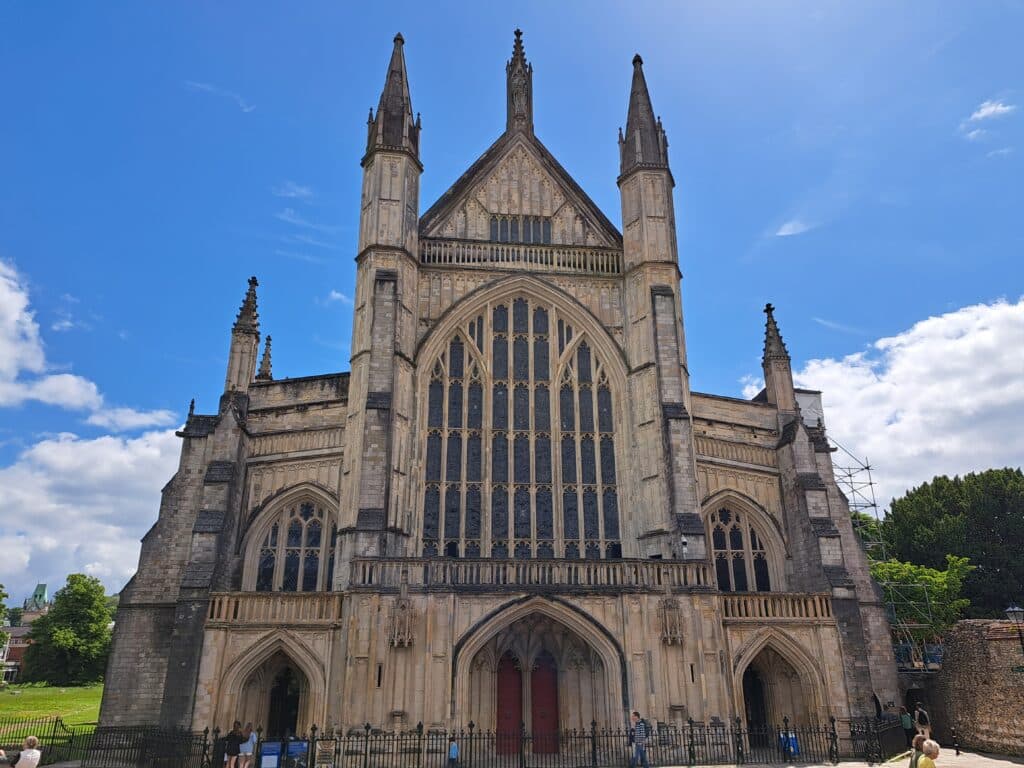
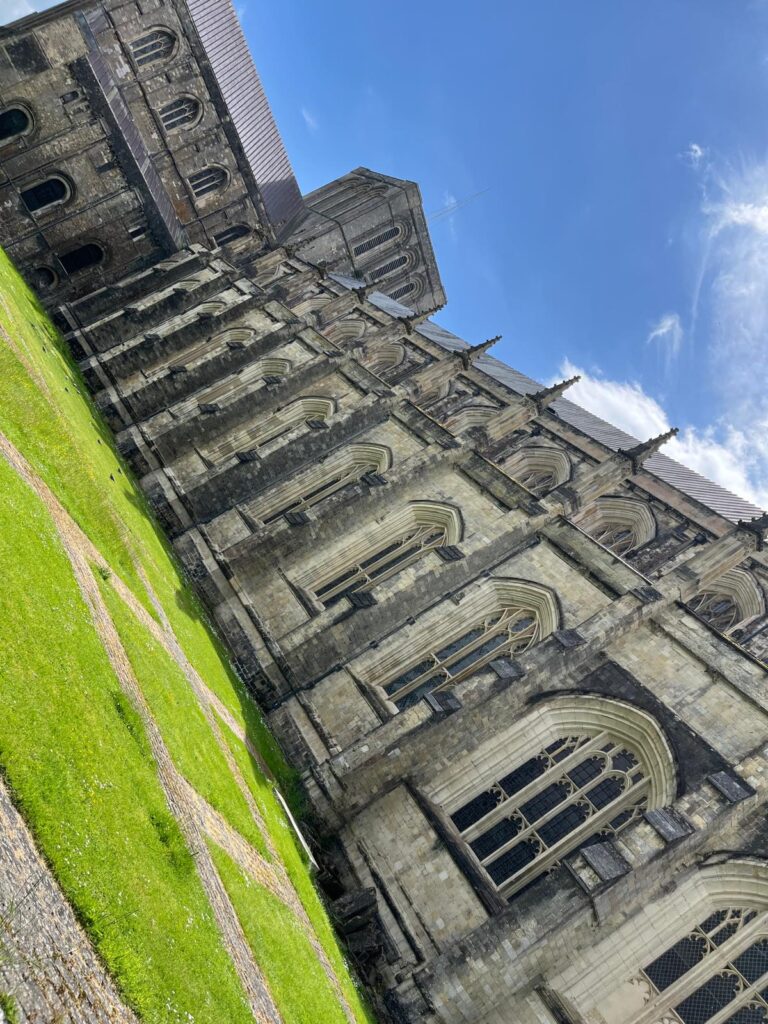
Built on the site of an earlier 7th-century church, Winchester Cathedral has been a place of worship and pilgrimage for centuries. It houses the remains of several notable figures, including the early English kings and the famous author Jane Austen. There is an entrance fee of £13 per adult – well worth paying to view the soaring vaulted ceilings and exquisite stained glass windows.
Its beautiful grounds, including a tranquil garden and the ancient burial site, provide a peaceful retreat in the heart of Winchester. Students and business folk relaxed on the lawns at lunchtime the day we visited.
The cathedral also hosts a variety of events throughout the year, from concerts and art exhibitions to traditional services and ceremonies.
4) The Great Hall
A walk up the historical High Street led us to The Great Hall. This is one of the finest surviving medieval aisled halls of the 13th century. It was once part of Winchester Castle, built by William the Conqueror, and is most famous for housing King Arthur’s legendary Round Table. Of course it’s only a replica, but it certainly is a draw card to this historic building. The table was constructed in the 1200s and then restored by Henry VIII. He insisted that the Tudor rose be added to the centre, along with a depiction of King Arthur himself painted in Henry’s likeness!
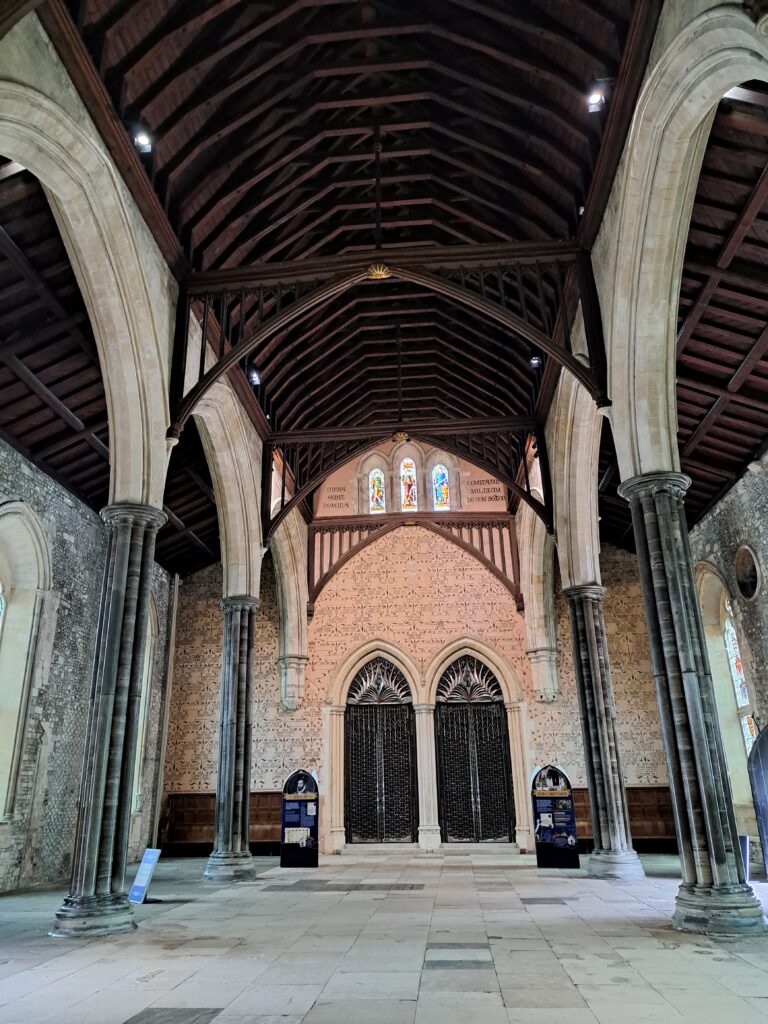
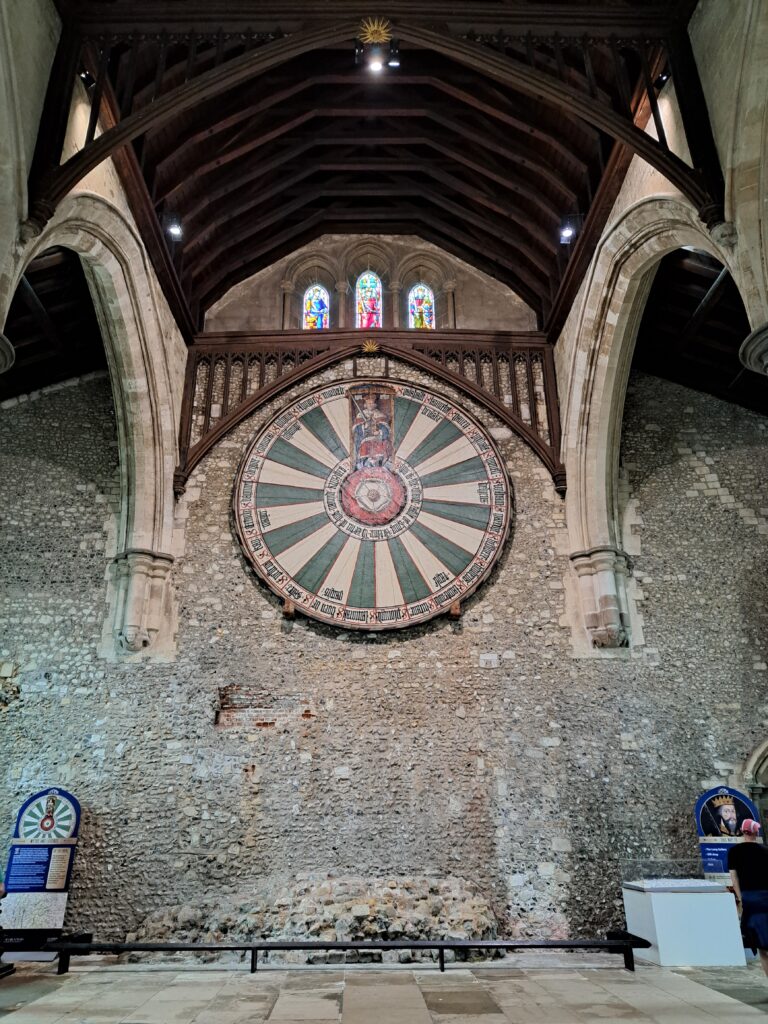
The hall’s magnificent architecture, with its lofty arches and grand windows, creates an impressive atmosphere, and as history enthusiasts, we’re glad we visited. The Great Hall also features a beautifully manicured Queen Eleanor’s Garden, a charming recreation of a medieval herb garden.
5) Museums
Westgate Museum
One of the ticket options includes entrance to the Great Hall along with access to two museums (£12.50 an adult). We purchased this option online, giving us a 10% saving on the cost of the tickets. After spending some time reading all the intriguing information boards in the Great Hall, we walked to the nearby Westgate Museum. Located in one of the two surviving medieval city gates of Winchester, this museum offers a fascinating insight into the city’s history. The Westgate has stood since the 12th century and has served various roles, including a debtors’ prison.
Today, it showcases a range of exhibits, including medieval weapons, weights and measures, and displays about the gate’s use over the centuries. From the rooftop, we enjoyed views of Winchester High Street and the city. Beware of the tiny doorway at the top of the staircase leading to the roof.
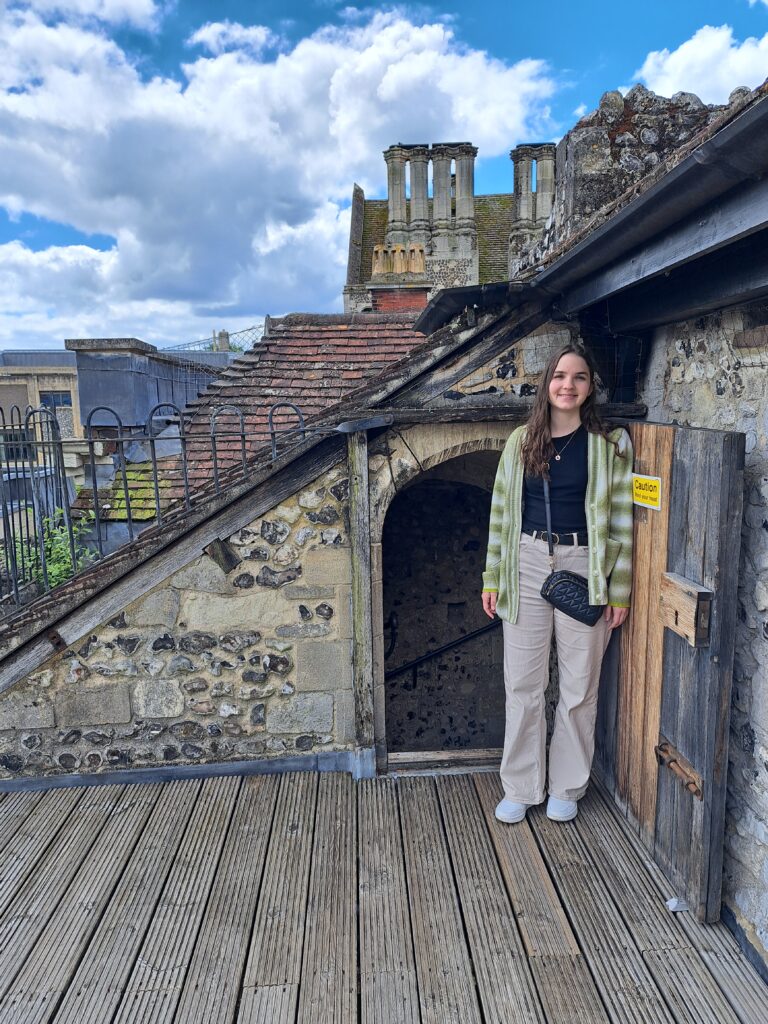
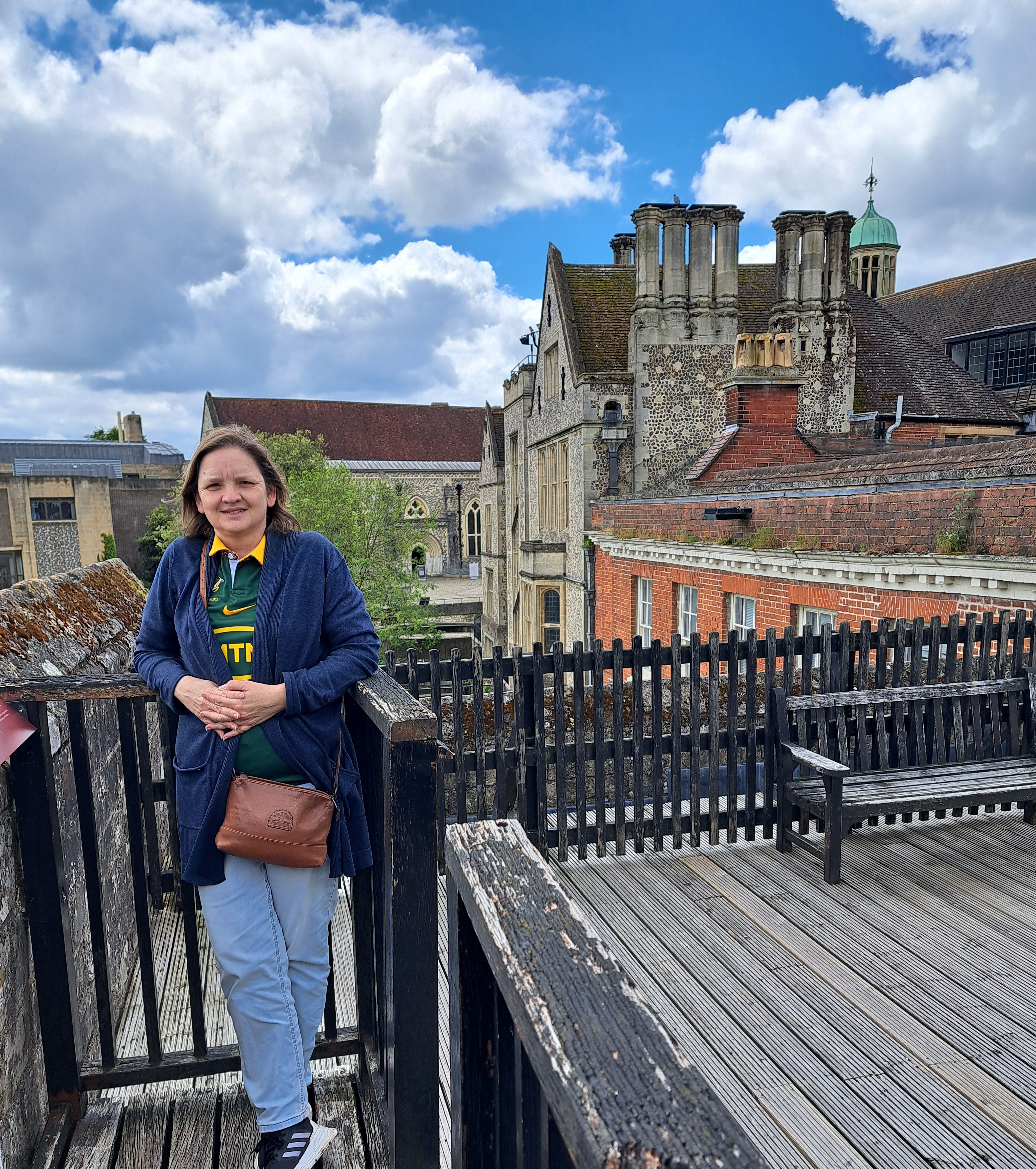
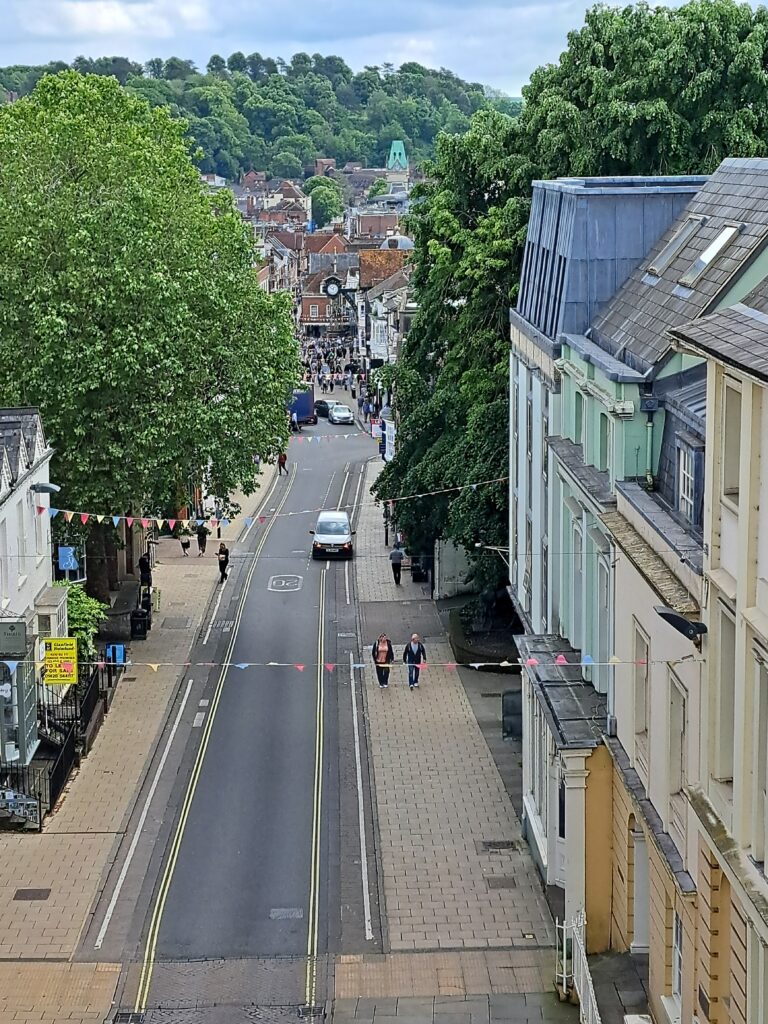
City Museum
The second museum was the City Museum. The City Museum provides a comprehensive overview of the city’s rich heritage from the Iron Age to the present day, with each stage on a different level in the museum. Located near the cathedral, the museum features a wide array of artefacts, including wonderfully preserved Roman mosaics, Anglo-Saxon treasures, and Victorian memorabilia. Interactive displays and detailed exhibits bring Winchester’s past to life, highlighting its evolution through different historical periods.
We enjoyed reading about Licoricia of Winchester, one of the most famous Jewish residents of Winchester. She was a prominent financier in the 13th century, known for her considerable influence and wealth. Licoricia played a significant role in the financial and social life of medieval England, often dealing with the nobility and even the crown. In 1277, she was murdered in her home in Winchester, along with her Christian maid. The motive for her murder remains unclear, but it was likely linked to her wealth and prominence!
The museum is family-friendly and offers various activities and educational programs, making it an engaging destination for visitors of all ages.
Coffee Shops, Cafés, And Restaurants
We concluded our exploration of the city with a late lunch at The South Downs Social, in King’s Walk, just off the High Street. The Social is a cyclists café, decorated with cycling jerseys and the names of famous cyclists on flags draped from the ceiling. Gary felt at home! We loved our cappuccinos and toasties and will definitely visit the café again next time we’re in Winchester.
Some other options are:
- Bento: We walked past this small family-run café. It seems to fill up quickly, and their own special brand of Vietnamese coffee is popular. The different aromas were amazing as we walked by.
- Winchester City Mill: Providing a tranquil place to enjoy a coffee and some pastries, the City Mill Cafe is a great place to go if you want to get away from the busyness of the High Street.
- Rick Stein: If you are looking for fine dining, be sure to visit Rick Stein’s seafood restaurant. Located on the High Street, the menu is sumptuous.
How To Get To Winchester
- A few good car parks exist in the city. We parked in the Colesbrook Street Car Park which is conveniently situated in the heart of the city. We visited midweek, so there were plenty of parking bays available, but I can imagine it would fill up quickly at weekends. Tower Street Multi-Storey Car Park or there are a choice of five Park and Ride Car Parks.
- Travelling by train is another option. There is a direct route from London (Waterloo) to Winchester, taking about an hour. The train ride is a mere 15 minutes from Southampton and just over half an hour from Reading.

